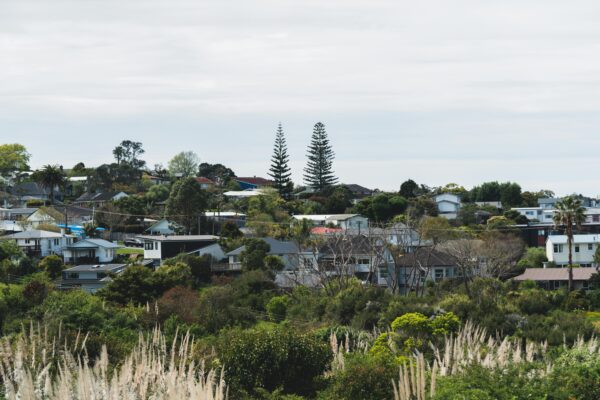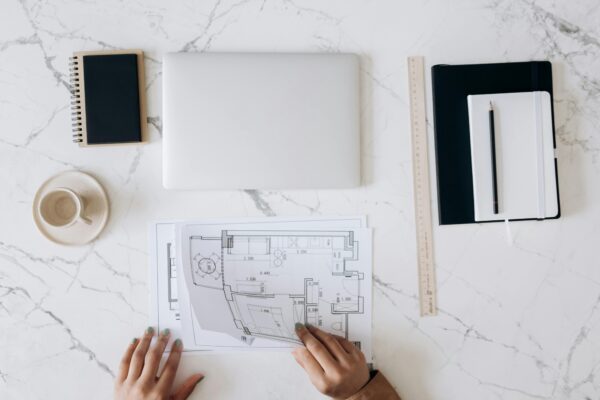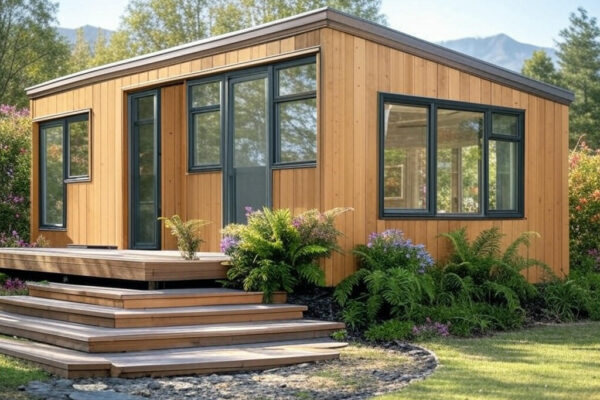A Homeowner’s Guide to Subdividing Property in New Zealand in 2025
If you’re a homeowner in New Zealand sitting on a larger-than-average section or eyeing a chance to unlock the potential of your property, subdivision might be on your radar. With Auckland’s housing market still buzzing in 2025 and interest rates fluctuating (as noted in recent updates from Stuff and NZ Herald), subdividing your land could be a smart move to boost your investment or create space for family. At Sonder Architects, we’re here to walk you through the process, costs, and consents you’ll need—plus what’s new in the world of property development this year.
Let’s dive into everything you need to know about subdividing your land in 2025, tailored specifically for homeowners like you.
What Is Subdivision, and Why Do It in 2025?
Subdivision is the process of legally dividing your land or buildings into smaller sections, each with its own title. This allows you to sell, develop, or transfer ownership of the new lots. In New Zealand, this process is governed by the Resource Management Act 1991 and overseen by your local council. For Auckland homeowners, the Auckland Unitary Plan (AUP) sets the rules, balancing growth with liveability.
So, why subdivide in 2025? For starters, Auckland’s population continues to climb, and with recent zoning changes under the Medium Density Residential Standards (MDRS)—fully rolled out across urban areas by now—higher-density living is more achievable than ever. News from RNZ in early 2025 highlighted a push for affordable housing, making subdivision a hot topic as councils encourage smarter land use. Plus, with interest rates reportedly easing slightly after a turbulent 2024 (NZ Herald), financing new builds or selling subdivided lots could be more appealing. Whether you’re looking to cash in, build a rental portfolio, or create a home for your kids, subdivision offers flexibility and value.

Example of a site where an existing property is being subdivided, and a new dwelling is to be built.
Step-by-Step: The Subdivision Process for Homeowners
Subdividing isn’t a weekend DIY project—it’s a journey that can take 6 to 12 months (or more for complex sites). Here’s how it works, with a 2025 lens:
Step 1: Dream Big—Define Your Vision for your subdivision
Start by asking: What’s your goal? Are you subdividing to sell a vacant lot, build a second home for rental income, or keep family close? With Auckland’s property prices still high in 2025 (Stuff reports), adding a modern, compact home to your section could be a goldmine. At Sonder Architects, we love helping homeowners brainstorm layouts that maximize space and appeal—think sleek, sustainable designs that fit the 2025 trend toward eco-conscious living (Homes.co.nz inspiration).
Step 2: Feasibility—Know What’s Possible (1-2 Weeks)
Before you get too excited, a feasibility study is essential. This checks your land’s zoning, size, access to utilities (water, power, drainage), and any risks like flooding or unstable soil. In Auckland, the AUP dictates minimum lot sizes for vacant subdivisions (typically 300-400m²), but here’s the kicker: if you include house designs, there’s no minimum lot size. This rule, confirmed on aucklandcouncil.govt.nz, encourages higher-density housing—a trend gaining traction in 2025 as councils push for urban infill to meet housing demands (RNZ).
Step 3: Design—Bring It to Life (12-16 Weeks)
This is where the fun begins. A geotechnical assessment ensures your land can handle construction, while architects and engineers map out lot layouts, infrastructure, and home designs. In 2025, we’re seeing homeowners lean toward multi-level, space-saving homes with green features like solar panels and rainwater tanks (Archipro vibes). Once your design is polished, it’s submitted for Resource Consent—a key approval from your council.
Step 4: Resource Consent (4-6 Weeks)
The council reviews your plans against the AUP and Resource Management Act. Non-notified applications take about 20 working days, but if neighbors or the public get involved (notified applications), expect delays. Recent 2025 updates from building.govt.nz note councils are cracking down on stormwater management—expect extra scrutiny if your site needs drainage upgrades.
Step 5: Engineering Plan Approval (EPA) (4-8 Weeks)
Next, detailed engineering plans cover utilities, driveways, and access. Auckland Council, Watercare, and Auckland Transport all weigh in. With 2025’s focus on climate resilience, sustainable drainage solutions are a must. Once approved, you’re cleared to start construction.
Step 6: Building Consent (6-8 Weeks)
While site work begins, apply for Building Consent to construct any homes. This ensures your builds meet the Building Act 2004 and NZ Building Code—think safety, fire compliance, and plumbing (building.govt.nz). In 2025, councils are fast-tracking consents for MDRS-compliant projects, so compact, multi-unit designs could speed things up.
Step 7: Site Work (15-18 Weeks)
Contractors level the land, install infrastructure, and connect utilities. At Sonder Architects, we oversee this phase to ensure quality—vital in 2025 as material costs remain volatile.
Step 8: Final Survey & Titles (18-22 Weeks)
A surveyor submits a Land Transfer (LT) Plan to the council, which issues 223 and 224C certificates once conditions are met. Your lawyer then registers new titles with Land Information New Zealand (LINZ). Titles in hand, you’re done!
What Consents Might You Need?
When you’re planning a subdivision or building project, there are three main types of consents you might encounter. Each serves a specific purpose, and the requirements can vary depending on your land, zoning, and vision. Let’s dive in:
1. Land Use Consent
This consent comes into play if your plans don’t quite fit the standard rules laid out in the Auckland Unitary Plan (AUP) or your local District Plan. For example, if you want to build more homes than your zoning typically allows, you’ll need this approval. However, here’s some good news for 2025: the Medium Density Residential Standards (MDRS), now fully rolled out across urban areas, allow up to three homes (up to three storeys) on many sites without needing a land use consent. This change, detailed on aucklandcouncil.govt.nz, is a game-changer for homeowners looking to maximize their land without extra red tape. That said, if your project pushes beyond these limits—say, a fourth unit or a unique design—you’ll still need to apply.
2. Subdivision Consent
Planning to split your property into separate lots? You’ll need a Subdivision Consent. This is the backbone of any subdivision project, ensuring your land can be legally divided into new titles. The council checks that your site is suitable—think access to roads, water, and sewage—and that it won’t cause issues like flooding or overburdened infrastructure. In 2025, with councils pushing for smarter land use (RNZ reports), this consent is non-negotiable if you want to sell or develop those new lots. It’s all about keeping things practical and compliant.
3. Building Consent
Ready to start construction? A Building Consent is your green light to break ground. This approval, governed by the Building Act 2004 and the New Zealand Building Code (building.govt.nz), ensures your new home or structure is safe, structurally sound, and meets standards for fire safety, plumbing, and drainage. Whether you’re building a cozy granny flat or a modern duplex, this consent is a must for most projects. In 2025, councils are streamlining processes for MDRS-compliant builds, so compact, multi-unit designs might see faster approvals. Small jobs—like a garden shed—might dodge this requirement, but don’t assume—check first!
How Long Do Consents Take in 2025?
Timing is a big question for homeowners, and in 2025, it varies. Based on the latest council updates, most consents take 6 to 8 months from start to finish, but here’s the breakdown:
- Land Use Consent: If required, it’s bundled into your resource consent process—expect 4-6 weeks for non-notified applications, longer if public feedback is needed.
- Subdivision Consent: Also part of resource consent, this typically aligns with the 4-6 week timeline, though complex sites (e.g., tricky drainage) could stretch it out.
- Building Consent: Once your subdivision is underway, this takes 6-8 weeks, assuming your plans are solid.
Recent news (Stuff) highlights council backlogs easing slightly in 2025, but delays can still happen—especially if your project needs extra stormwater solutions, a hot topic this year with climate concerns on the rise. Good planning and expert advice can keep things on track.
How Much Will It Cost in 2025?
The cost of subdividing your land depends on a few key factors: the size of your project, the quirks of your site (think sloping land or tricky drainage), and the fees councils charge. For a straightforward two-lot subdivision in Auckland—say, splitting your backyard into two titles—here’s what you’re looking at:
- Total Cost Per Lot: $180,000 – $220,000
This covers the essentials:
- Feasibility Studies and Design: Checking if your land can handle a split and sketching out plans—think zoning checks and early layouts.
- Surveying and Engineering: Mapping the new lots and designing utilities like water, power, and drainage.
- Council and LINZ Fees: Paying for consents and getting new titles registered with Land Information New Zealand (LINZ).
- Site Works: The physical stuff—levelling land, installing driveways, and hooking up services.
- Legal Fees: Lawyers to finalize titles and keep everything legit.
Note: This doesn’t include building a house on your new lot. Construction costs in 2025 vary wildly depending on size and style, but for a modest, modern home, expect $500,000 and up. Want a sleek, eco-friendly build with all the bells and whistles? That could climb higher.
Bigger Projects, Better Value
Here’s a silver lining: if you’re subdividing into more than two lots, costs per lot often drop. Why? Expenses like infrastructure, planning, and council fees get spread across multiple titles. A three- or four-lot project might shave thousands off the per-lot price, making it a savvy move for homeowners with larger sections. In 2025, with Auckland’s push for higher density (RNZ coverage), multi-lot subdivisions are gaining traction as a way to maximize returns.
Why Costs Vary in 2025
No two subdivisions are the same. A flat, urban site with existing utilities? That’s cheaper than a hilly plot needing retaining walls or new stormwater systems. Council fees also differ—Development Contributions (DCs) for infrastructure can add up, especially in growth areas (aucklandcouncil.govt.nz). And if your land has surprises like unstable soil, geotechnical fixes could bump up the bill. At Sonder Architects, we’ve seen projects swing from $180,000 to over $250,000 per lot based on these challenges—so early planning is key.
The 2025 Economic Edge
Good news for homeowners: construction inflation, which spiked in recent years, is easing slightly in 2025 (NZ Herald). Material costs are stabilizing, and with interest rates dipping after a rollercoaster 2024 (Stuff), financing your project might feel less daunting. This makes 2025 a decent window to lock in quotes and get moving before the next economic shift. Pair that with Auckland’s ongoing housing shortage, and subdividing could be a profitable play—whether you sell a lot or build to rent.
Saving Money with Smart Planning
Subdivision costs can creep up if you’re not careful, but there are ways to keep them in check. At Sonder Architects, we’ve saved clients thousands by catching issues early—like tweaking designs to avoid extra engineering or navigating council rules efficiently. In 2025, we’re seeing a trend toward compact, MDRS-friendly homes (Archipro inspiration), which can lower site work costs while fitting more value onto your land. Working with pros who know the ropes—like us—means fewer surprises and a smoother ride.
Risks of Subdividing in Auckland’s Suburbs in 2025
Subdividing your property in Auckland’s suburbs can feel like a golden opportunity in 2025. With the Auckland Unitary Plan (AUP) encouraging higher density and the city’s housing demand still pressing, splitting your land into new lots could unlock serious value—or a rental income stream. But before you start dreaming of extra titles, it’s worth understanding the risks that come with it. At Sonder Architects, we’ve seen homeowners dive in without a full picture, only to hit roadblocks that cost time, money, or both. Here’s a look at the key risks of subdividing in Auckland in 2025—and how to sidestep them.
1. Zoning Traps and Unitary Plan Missteps
The Auckland Unitary Plan, fully operative and tweaked by 2025, is your rulebook for subdivision. It’s opened doors with zones like Mixed Housing Urban and the Medium Density Residential Standards (MDRS), letting you build up to three homes without a resource consent in many suburbs. Sounds great, right? Not so fast. Misreading your zoning—or assuming it’s more flexible than it is—can derail your plans.
Take the Single House Zone, still hanging on in pockets of places like Devonport or Wellsford. Here, subdivision is tightly controlled, with minimum lot sizes of 600m² for vacant lots and strict rules against multiple dwellings. Even in Mixed Housing Suburban zones, vacant lots need 400m², and if your site doesn’t meet the mark, you’re stuck. In 2025, councils are also enforcing “qualifying matters”—exemptions for heritage, ecological, or hazard-prone areas (RNZ updates)—which could shrink your subdividable space. Misjudge your zone, and you might face a rejected application or costly redesigns.
Tip: Check your zoning on aucklandcouncil.govt.nz and talk to an expert before you commit.
2. Hidden Site Challenges
Auckland’s suburban landscape is full of surprises—some less pleasant than others. Your flat-looking section might hide unstable soil, flood risks, or overland flow paths that complicate development. In 2025, with climate change front and center (NZ Herald reports), councils are stricter about stormwater management and natural hazards. A site prone to flooding—like parts of Henderson or Glen Eden—might need expensive drainage upgrades or be deemed unsuitable altogether.
Steep slopes or protected vegetation can also shrink your usable land or trigger specialist reports (geotechnical, ecological), piling on costs. We’ve seen homeowners blindsided by tens of thousands in extra engineering fees because they didn’t spot these issues early.
Tip: Get a feasibility study upfront. It’s cheaper than fixing problems mid-project.
3. Infrastructure Overload
Subdividing means more homes—and more strain on utilities like water, wastewater, and power. Auckland’s aging infrastructure is already stretched in 2025 (Stuff coverage), especially in older suburbs like Mt Eden or Papatoetoe. If your site lacks easy access to services—or needs major upgrades to connect—you’re looking at big bills. Watercare and Auckland Transport are picky about access too; a narrow driveway or tricky vehicle crossing could force redesigns or get your engineering plans rejected.
Plus, councils often slap on Development Contributions—fees to fund public infrastructure—that can hit $20,000+ per lot. Skimp on planning here, and your budget could blow out fast.
Tip: Factor in utility and access costs early, and consult engineers to avoid surprises.
4. Cost Creep and Market Shifts
Speaking of budgets, subdivision isn’t cheap. A basic two-lot split in Auckland’s suburbs runs $180,000-$220,000 per lot in 2025, covering consents, site works, and legal fees. Add construction inflation—easing but still a factor (NZ Herald)—and unexpected delays, and costs can spiral. If your project drags past a year (common for complex sites), you might face rising contractor rates or material shortages.
Then there’s the market. Auckland’s property prices are strong, but 2025’s economic vibe—think interest rate wobbles and buyer caution —could mean your new lot doesn’t sell as fast or high as planned. Overstretch financially, and you’re stuck with a half-finished project.
Tip: Build a buffer into your budget and time your sale with market trends.
5. consenting Risks and Council Delays
Getting consents—land use, subdivision, building—is a gauntlet. In 2025, Auckland Council is swamped with applications as density ramps up, and processing times can stretch beyond the standard 6-8 months if they request more info (aucklandcouncil.govt.nz). A poorly prepared application—say, missing stormwater plans or ignoring MDRS design standards—could lead to rejection or forced changes that kill your project’s viability.
Public notification is another wild card. If neighbors object (think privacy or traffic gripes), your timeline and costs balloon. With councils prioritizing “density done well” in 2025, subpar designs won’t cut it either.
Tip: Hire pros—like us at Sonder Architects—to nail your application and meet council expectations.
6. Neighborhood Pushback
Subdivision changes suburbs, and not everyone’s thrilled about it. In 2025, established areas like Remuera or Ponsonby are seeing tension as traditional quarter-acre dreams clash with terrace homes and apartments (Homes.co.nz trends). Angry neighbors can’t stop a compliant project, but they can slow it down with objections or appeals, especially if your design blocks their sun or strains parking.
Tip: Design with sensitivity—think setbacks and height limits—to keep the peace where possible.
Why the Risks Are Worth Watching in 2025
Auckland’s subdivision boom, fueled by the AUP and MDRS, is reshaping suburbs from Papakura to Albany. But with opportunity comes complexity. In 2025, stricter environmental rules, infrastructure limits, and economic uncertainty amplify the stakes. Rush in blind, and you could lose more than you gain.
We’ve guided homeowners through these pitfalls, crafting plans that dodge risks and deliver results. From zoning checks to sustainable designs, we’re here to make your 2025 subdivision a win—not a warning tale. Ready to weigh the risks against the rewards? Reach out, and let’s explore your property’s potential together.
Subdivision is complex, but it doesn’t have to be stressful. At Sonder Architects, we’re hands-on from vision to titles, blending architectural flair with practical know-how. In 2025, our focus is on sustainable, high-density designs that align with Auckland’s evolving rules and homeowner dreams. Unlike big firms, we offer personalized service—think of us as your subdivision co-pilot, not a faceless consultant.
We’ve seen homeowners save thousands by catching design flaws early or opting for clever layouts inspired by Houzz—like duplexes that double rental potential. With only a handful of projects yearly, you’re not just a number to us.
Final Thoughts: Is Subdivision Right for You in 2025?
With Auckland’s housing crunch ongoing and councils pushing for density, 2025 is a prime year to subdivide. Whether you’re capitalizing on zoning shifts, riding lower interest rates, or building generational wealth, the rewards can outweigh the effort. Start with a feasibility check—reach out to us at Sonder Architects, and let’s turn your land into something extraordinary.
What is subdivision, and why should I consider it in 2025?
Subdivision means legally splitting your land or buildings into smaller sections with separate titles, allowing you to sell, develop, or transfer them. In 2025, it’s a smart move in Auckland due to high housing demand, zoning changes under the Auckland Unitary Plan (AUP), and easing interest rates, offering opportunities to boost property value or create family space.
How long does the subdivision process take?
Typically 6-12 months, depending on complexity. Steps like feasibility (1-2 weeks), design (12-16 weeks), consents (4-8 weeks each), site work (15-18 weeks), and titles (18-22 weeks) add up, with potential delays from council backlogs or site issues in 2025.
What consents do I need to subdivide in 2025?
You might need: • Land Use Consent: If your plans exceed AUP rules (e.g., more homes than allowed), though MDRS permits up to three homes without it in some zones. • Subdivision Consent: Mandatory for dividing land into new lots. • Building Consent: Required for construction, ensuring safety and compliance.
How long do consents take in 2025?
Most take 6-8 months total. Resource consents (land use/subdivision) are 4-6 weeks if non-notified, while building consents take 6-8 weeks. Delays can occur due to council scrutiny on stormwater or public input.
How much does subdividing cost in 2025?
For a two-lot subdivision in Auckland, expect $180,000-$220,000 per lot, covering feasibility, design, surveying, engineering, council/LINZ fees, site works, and legal costs. House construction adds $500,000+ per modest build. Larger projects lower per-lot costs.
Why might costs vary or increase in 2025?
Site challenges (e.g., slopes, flooding), council fees, or delays can push costs up. Construction inflation is easing, but material shortages or market shifts could still affect your budget.

















